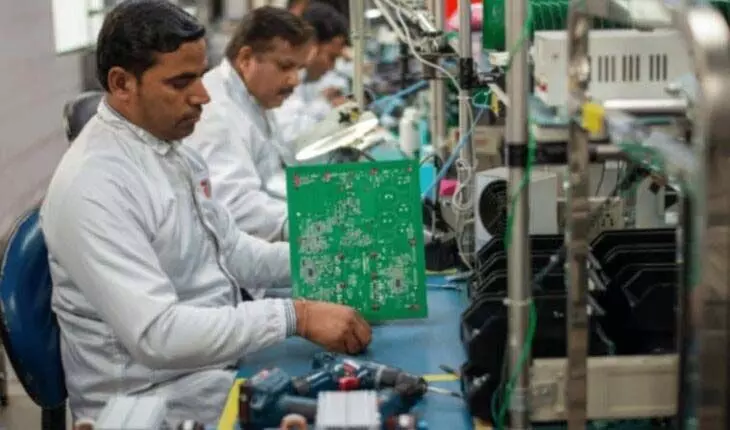India’s electronics sector set to create 12 million jobs: Report

NEW DELHI New Delhi: India’s electronics industry is witnessing unprecedented growth, and is set to create 12 million (1.2 crore) jobs at a compound annual growth rate (CAGR) of 25-30 per cent, according to a report. According to a report by TeamLease Degree Apprenticeship, estimates indicate the creation of 12 million jobs, comprising 3 million direct and 9 million indirect roles. However, a severe shortage of 10 million trained professionals underlines the urgent need to bridge this gap to sustain and scale up India’s growth in the electronics sector.
The electronics manufacturing industry is growing, driven by Prime Minister Narendra Modi’s vision of making the country a $500 billion electronics manufacturing hub by 2030. As the industry diversifies into sectors such as communication and broadcast electronics, consumer electronics, industrial electronics, and aerospace and defence electronics, the demand for specialised skills has increased. The growing need for components such as semiconductors and electromechanical parts further compounds this challenge. India is on the verge of becoming the global leader in electronics manufacturing, with domestic production reaching $101 billion in FY23, driven by sectors such as mobile phones (43 per cent), consumer electronics (12 per cent), industrial electronics (12 per cent) and auto electronics (8 per cent).
“By FY2027-28, the industry will require 12 million professionals – 3 million in direct roles and 9 million in indirect roles, yet a staggering skills gap of 10 million persists. Bridging this gap requires a strong focus on skill development, which includes combining classroom learning with practical training through apprenticeships,” said A.R. Ramesh, CEO, TeamLease Degree Apprenticeship. He added that the expansion of the apprenticeship ecosystem, which is currently growing at a CAGR of 55 per cent and is projected to reach 2 million apprentices by 2027 from 1 million apprentices, can create a stable talent pipeline to meet the industry’s needs.
Additionally, strengthening industry-academia collaboration is crucial to double the two million graduates entering the workforce to four million by FY 2027-28. Policies such as the PLI scheme, which has attracted investments worth Rs 1.97 lakh crore in 14 key sectors, including electronics, and employment-linked incentives (ELI) designed to boost job creation have laid a strong foundation. “The growing demand in high-growth sectors such as semiconductors, drones, electric vehicles, solar panels, IT and telecom hardware, consumer electronics and industrial electronics, driven by India’s emergence as a global R&D hub and the world’s third-largest startup ecosystem, reflects an urgent need for a highly skilled workforce,” said Sumit Kumar, chief strategy officer, TeamLease Degree Apprenticeship.





